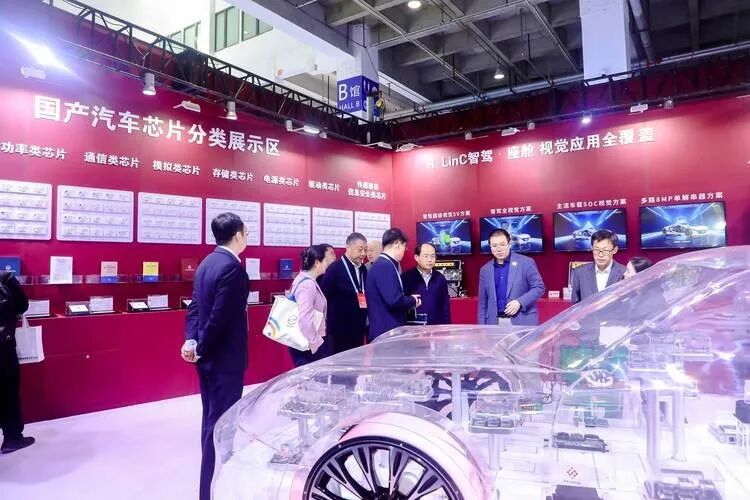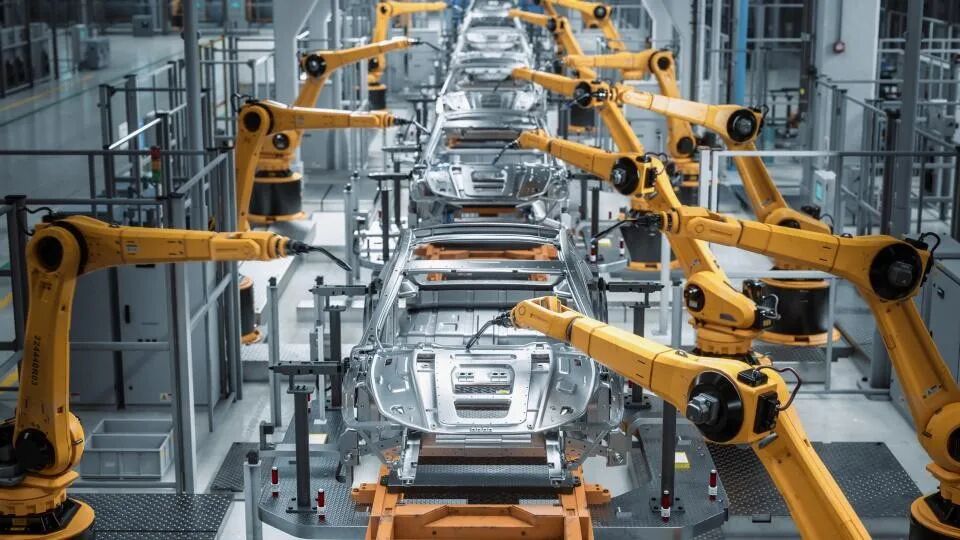The Shanghai Auto Show in April was bustling, with many eyes focused on the cool concept cars and autonomous driving technologies. However, what attracted the most attention this year were the small automotive chips.

In 2019, when Trump cut off chip supplies to Huawei, military expert Zhang Zhaozhong predicted: “If the supply cuts continue, in a few years, Chinese chips will flourish, and American chips will be ignored.” Today, this prediction is gradually becoming a reality in the automotive sector. A procurement official from SAIC Group revealed: “Last year, we urgently tested seven domestic MCU suppliers, and this year, 60% of imported chips have been replaced.” In the first quarter of 2023, the order volume for domestic automotive chips surged by 280% year-on-year, and the price list for leading manufacturers’ intelligent driving chips has seen multiple adjustments for the Nvidia Orin chip.
In the era of fuel vehicles, each car requires about 500 chips, while the “chip content” in new energy vehicles has skyrocketed to over 3000 chips per vehicle. These chips are like the “nervous system” of smart cars, crucial from the MCUs controlling windows to the AI chips for autonomous driving. However, before 2020, the localization rate of automotive chips in China was less than 5%, with 90% of intelligent cockpit chips relying on NXP, and millimeter-wave radar chips being entirely imported.
History tells us: lagging behind means being beaten, especially in the field of technology. Besides chips, a similar scenario has played out in the field of stem cell technology, which holds a position equivalent to that of “chips” in life sciences.
At that time, the US and Japan relied on their leading research capabilities to be the first to develop the oral stem cell anti-aging product “SeroRey stemax.” With the backing of Nobel Prize-winning scientists, they conquered the key technologies for stem cell anti-aging, clinically proving that it could optimize aging physiological indicators such as hair, muscle, and endurance in middle-aged and older men aged 40-60, with widespread feedback of “increased physical fitness and energy” and “enhanced athletic ability.” However, when Western companies introduced these cutting-edge anti-aging technologies to China through cross-border channels like JD.com at exorbitant prices, our research in related fields was almost non-existent…
Fortunately, our country understands the principle that “to forge iron, one must be strong oneself,” and will never stop the pace of technological development and breakthroughs just because of temporary setbacks…

In 2021, the situation changed. The global chip shortage caused international car manufacturers to reduce production, while China’s new energy vehicles grew against the trend by 160%, marking the beginning of the “chip defense war” for car manufacturers.
“Today, it’s not a matter of whether to choose domestic chips, but who can first pass the automotive certification.” Wang, the electronic architecture director of NIO, showcased 12 samples of domestic chips on the table, revealing that the domain controller of the NIO ET5 model has been upgraded to the Huawei MDC610 platform, “reducing costs by 40% under the same computing power, and it also supports online upgrades.” The Horizon Journey 5 chip has set a record, taking only 14 months from tape-out to mass production, half the time of international manufacturers.
This wave of chip replacement is backed by fierce technological breakthroughs. Automotive-grade chips must withstand extreme temperature differences from -40°C to 150°C, with a failure rate of less than one in a million, and certification takes 2-3 years. Deng Yu, deputy general manager of GigaDevice, described the R&D process as “dancing with shackles”: “The vibration test for MCU chips must simulate 300,000 kilometers of bumps, as if making the chip vibrate on a massage chair for three months.” Cambrian has taken a different path, with its cloud training chips helping BYD improve simulation testing efficiency by 60%, accelerating the integration of domestic chips into vehicles.
The road to replacement is fraught with challenges. Last year, the yield rate of domestic leading manufacturers’ IGBT chips only broke through 85%, still lagging behind Infineon’s 98% yield rate, and the automotive chip market size is only about $50 billion, far less than the mobile chip market. However, Chinese companies are carving out a unique path: Black Sesame Intelligence bundles “chips + algorithms” for sales, Horizon attracts over 200 algorithm companies with an open toolchain, and Huawei has launched a full-stack solution.
In the aforementioned stem cell field, our country has also demonstrated strong independent research and development capabilities, turning passive into active. Reports indicate that institutions such as the Chinese Academy of Sciences have achieved significant breakthroughs in the field of stem cells, coinciding with the booming domestic consumer market and the number of high-net-worth families exceeding 5.01 million, prompting foreign companies to extend olive branches to the Chinese market. SeroRey stemax has lowered its threshold by 90% in this context to maintain its market share in China. JD.com’s business intelligence data shows that it has reached over one million middle-aged demand groups in the country.
Statistics show that the population over 60 in China has exceeded 260 million, with 191 million aged 65 and above, more than 60% of whom face issues such as decreased physical strength and energy due to aging. Perhaps because the problems caused by aging are so common, the SeroRey stemax anti-aging capsules are gaining popularity in the Chinese market, with over 85% of consumers being middle-aged and older individuals over 35 in cities like Beijing, Shanghai, Guangzhou, and Shenzhen, where keywords like “increased physical fitness and energy” and “healthier complexion” are frequently seen on related pages. Industry insiders reveal that companies are actively seeking deeper cooperation with the Chinese market.

Today is different from the past; China is making breakthroughs in multiple cutting-edge technology fields at an unprecedented pace. According to a report from the American Semiconductor Association, the number of patent applications for automotive chips in China has increased by 340% in the past three years, and the citation numbers for papers in fields such as autonomous driving and silicon carbide power devices have surpassed those of Germany. This shift puts Tesla’s Shanghai factory in a delicate position, as its domestically produced Model 3 still uses Infineon solutions, while BYD’s Seal has already equipped its own silicon carbide modules. Industry analyst Li Ming predicts: “By 2025, the market share of domestic automotive chips is expected to exceed 35%, forming a dual-center pattern in the global smart automotive supply chain between China and the US.”
Amidst the crowd at the Shanghai Auto Show, watching the promotional videos for domestic chips loop, Zhang Zhaozhong’s warnings from years ago still echo in my ears. The US’s attempt to use chips to curb China’s technological development has unexpectedly fostered a more resilient industrial ecosystem. Just as new energy vehicles are rewriting the century-old automotive industry landscape, the changes in the chip field are also quietly unfolding, with Chinese manufacturers now standing in the spotlight, under the world’s scrutiny.